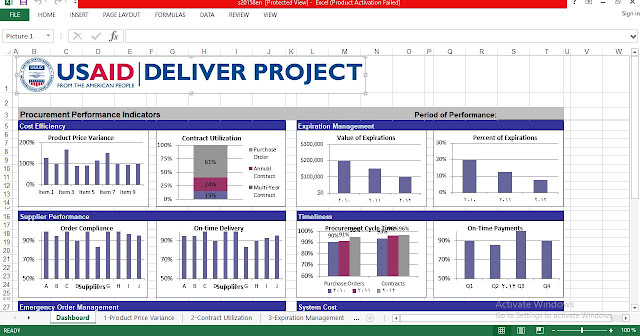Procurement Performance Indicators Dashboard
Procurement Performance is a question of the definition. Every organization has a somewhat different understanding as to what should apply as a success and thus influence the added value of the purchase. Procurement Performance Measurement provides an answer.
Organizations today rely on Procurement to drive value beyond unit price savings. For Chief Procurement Officers (CPOs), it is challenging to measure the performance of managers who drive these sources of value.
Fair and accurate performance measurement is critical for attracting, retaining and promoting top procurement talent. In a typical procurement environment, some categories require larger efforts on cost and risk avoidance, with minor savings achievements, while other categories yield significant savings by nature of the products purchased.
For some categories, securing the latest technology to enable top-line growth may far outweigh the importance of purchase price. How can the CPO assess individual category manager performance, each driving unique value, on an even playing field?
Individual performance effectiveness of category managers is then based on their ability to:
- Effectively engage with cross-functional business stakeholders - as Procurement continues to expand the ways that it adds value to an organization, the ability of its professionals to engage with business unit stakeholders is critical. Many leading organizations now use 360 degree reviews that leverage insights from many parts of the organization to evaluate an individual’s performance. As one leader put it, “Procurement is a cost center, so we are only relevant to the organization if we meet business needs.”
- Demonstrate category expertise – a category manager with a strong knowledge of his/her supply base and category will know where to focus for improved results. For example, the plastics category manager will keep an eye on crude oil prices and commodity markets to predict raw material cost impacts, whereas her colleague may be focused on bringing the latest semiconductor technology into the company.
- Develop and deliver against value-based category strategies - category managers can be measured on their ability to deliver business impact in unique ways. A category strategy is dependent on translating these value drivers into category objectives. For some categories, improving the strength of supplier relationships can translate into access to cutting-edge innovation before the market.
Download also:
Reference: scmr


Post a Comment